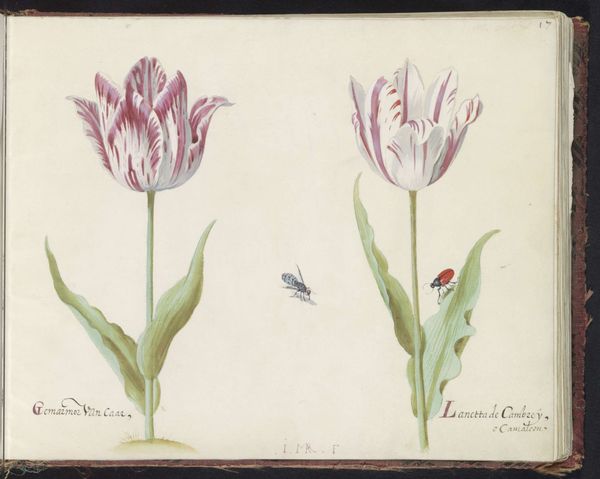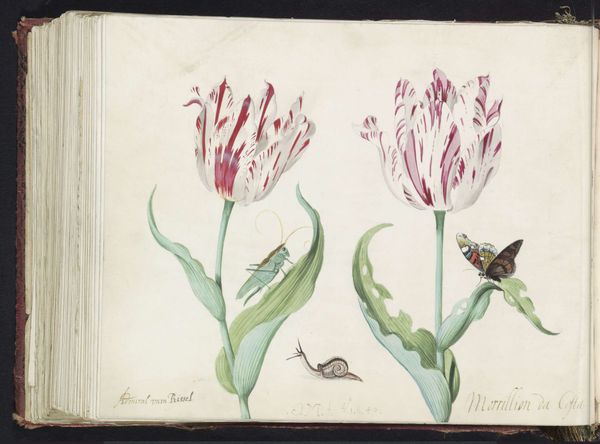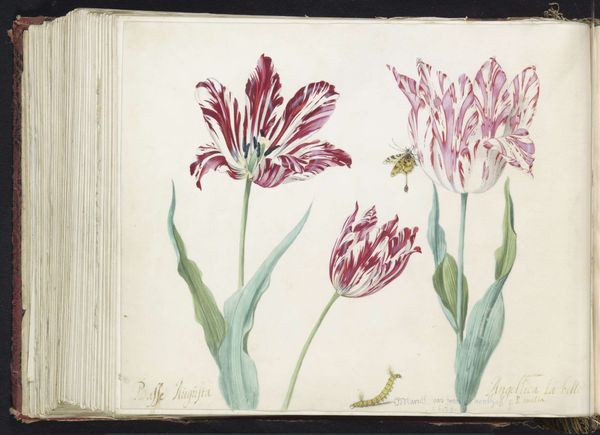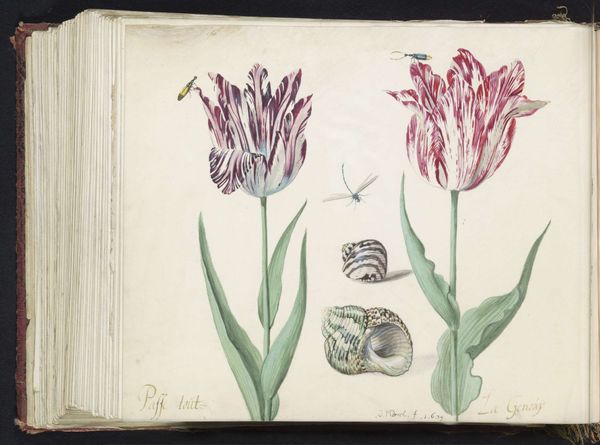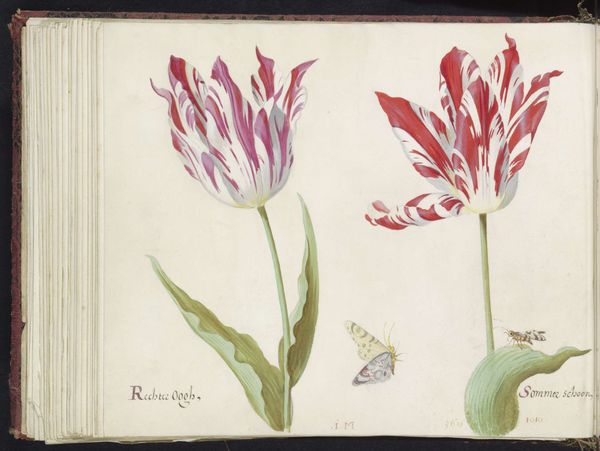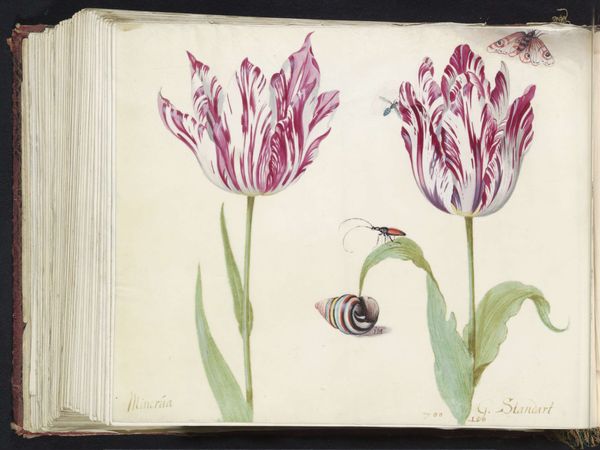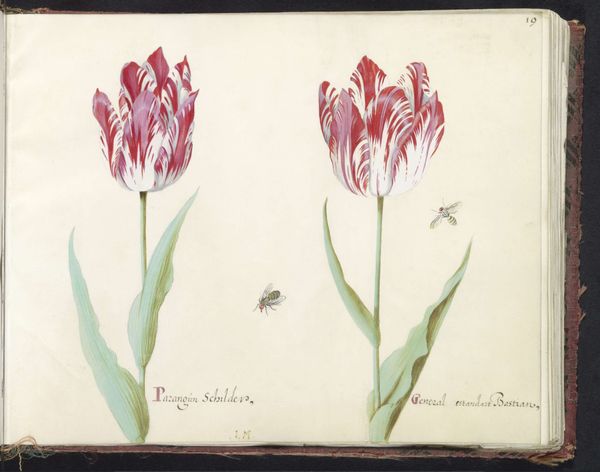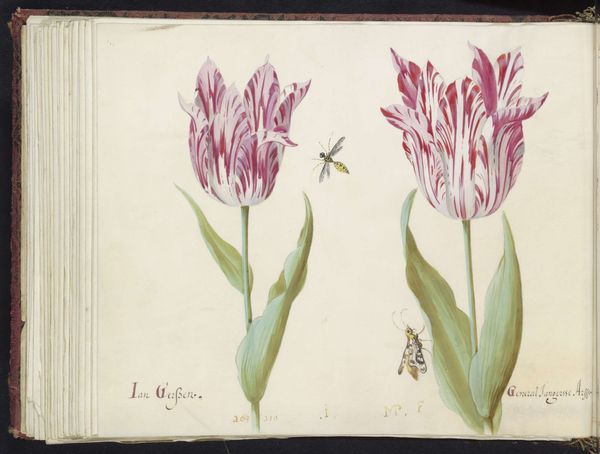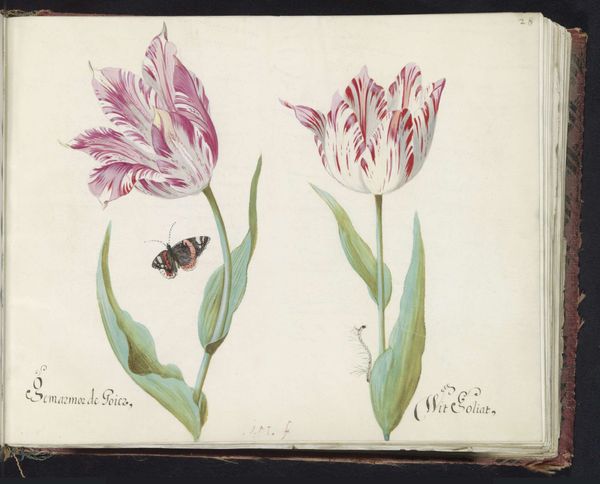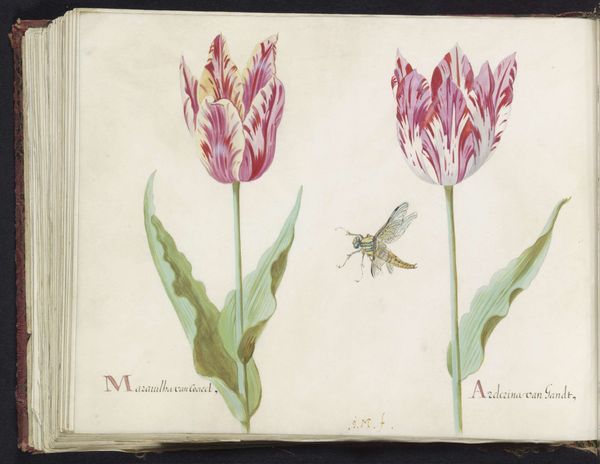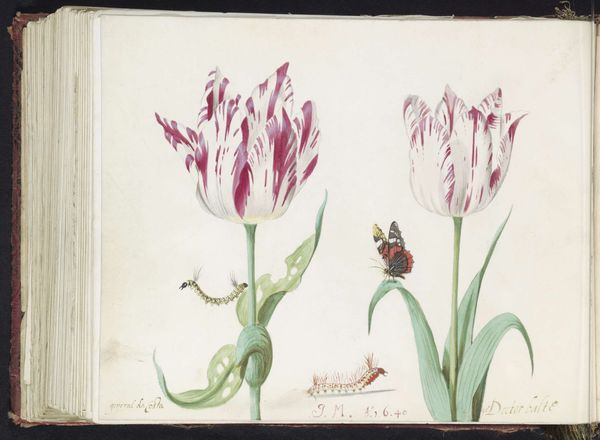
painting, watercolor
#
dutch-golden-age
#
painting
#
watercolor
#
botanical art
#
watercolor
Dimensions: height 265 mm, width 335 mm
Copyright: Rijks Museum: Open Domain
Jacob Marrel created "Two Tulips with a Grasshopper" using watercolor on paper. While undated, it's important to consider the cultural phenomenon of "Tulip Mania" in the 17th-century Dutch Golden Age. The tulip, originally from Turkey, became a status symbol and a speculative investment. Some bulbs were rarer because their striking colors were caused by a virus. People paid exorbitant prices, and the market eventually crashed. Marrel, as a flower painter, would have been deeply embedded in this culture of both beauty and economic risk. The painting invites reflection on desire, value, and fragility. The grasshopper is not merely a detail; it serves as a symbolic reminder of the ephemeral nature of beauty and wealth. It's a “memento mori,” a reminder of the fleeting nature of life. This image reflects the intense emotional and financial investment tied to these flowers, while subtly hinting at their inevitable decline.
Comments
No comments
Be the first to comment and join the conversation on the ultimate creative platform.
